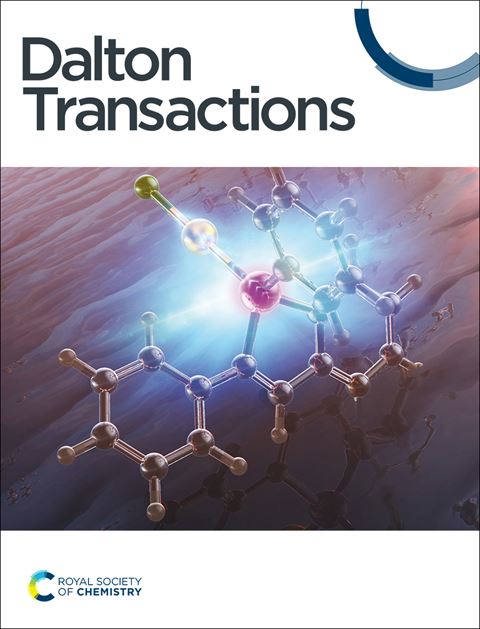Synthesis, electronic and photophysical investigations of ruthenium(II)-centred heterometallic Kuratowski complexes which feature redox-active metal centres
IF 3.5
3区 化学
Q2 CHEMISTRY, INORGANIC & NUCLEAR
引用次数: 0
Abstract
We present the synthesis and comprehensive characterization of a series of complexes belonging to the Kuratowski (K3,3) family. These are pentanuclear {RuIIM4} complexes (M = Co2+, Ni2+, Zn2+) which were prepared by employing a directed two-step synthesis facilitated by the recently published [RuII(Me2bta)2(Me2btaH)4] precursor complex (Me2btaH = 5,6-dimethyl-1,2,3-benzotriazole). The pentanuclear Kuratowski complexes showcase a unique combination of photo-active ruthenium with redox-active metal centres. The μ3-bridging 1,2,3-triazolate ligands in these complexes facilitate electronic coupling between the metal centers, as revealed through electrochemical and photophysical studies. Comparisons with {RuIIZn4} and {RuIICu4} Kuratowski compounds reveal that Co(II) significantly influences both the Ru(II/III) redox step and the position of the MLCT (metal-to-ligand charge transfer) band, whereas Cu(II) and Ni(II) exhibit minimal influence. Photophysical investigations reveal the {RuIIZn4} compound as the only phosphorescent species, displaying an emission band extending into the near-infrared region. This emission originates from a triplet 3MLCT state and features an exceptionally large Stokes shift, with a long lifetime of the excited-state of about 3.3 μs in powdered form at room temperature.

以氧化还原活性金属中心为特征的钌(II)中心异金属库拉托夫斯基配合物的合成、电子和光物理研究
本文章由计算机程序翻译,如有差异,请以英文原文为准。
求助全文
约1分钟内获得全文
求助全文
来源期刊

Dalton Transactions
化学-无机化学与核化学
CiteScore
6.60
自引率
7.50%
发文量
1832
审稿时长
1.5 months
期刊介绍:
Dalton Transactions is a journal for all areas of inorganic chemistry, which encompasses the organometallic, bioinorganic and materials chemistry of the elements, with applications including synthesis, catalysis, energy conversion/storage, electrical devices and medicine. Dalton Transactions welcomes high-quality, original submissions in all of these areas and more, where the advancement of knowledge in inorganic chemistry is significant.
 求助内容:
求助内容: 应助结果提醒方式:
应助结果提醒方式:


